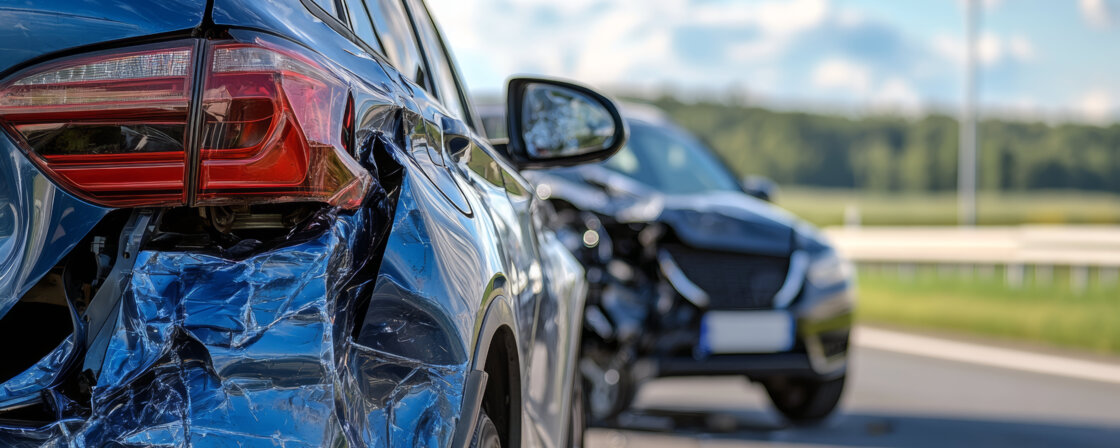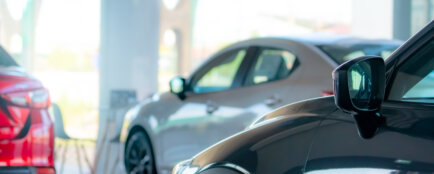What is amortisation
In practice, depreciation is most often understood as the gradual loss of value of an asset over time (typically a car or a machine). Imagine it simply: you buy a new car for CZK 600,000. The moment you drive it out of the dealership, you wouldn’t sell it for the same price. Its value automatically drops, even if you wash it the next day and return it with a full tank of gas.
This natural loss of value is called depreciation. This is due to both physical wear and tear (a car is used, something can wear out, wear down, rust) and moral obsolescence – every year new technology, more efficient engines, higher safety standards, and suddenly your “new” car isn’t such a terror anymore.
Are you solving a similar problem?
Planning to buy or sell a car?
We will arrange the purchase or sale of any movable asset for you legally, without any ambiguities or kinks. You can sign in just 3 days.
I want to help
- When you order, you know what you will get and how much it will cost.
- We handle everything online or in person at one of our 6 offices.
- We handle 8 out of 10 requests within 2 working days.
- We have specialists for every field of law.
Where do you see depreciation in practice?
- In tax and accounting – entrepreneurs and businesses can deduct the purchase price of an asset (e.g. a car) from their taxes gradually. They do not write it off all at once, but “amortize” it over, say, 5 years. Each year they deduct a portion of the cost of the car as an expense.
- With insurance – if something happens to your car, the insurance company will often not pay you the full amount, but less the depreciation – that is, how much the car has lost in value since it was purchased.
- When selling – if you are selling a laptop, machine or car, for example, the buyer expects a lower price because the asset is no longer new. The difference between the purchase price and the sale price is just depreciation.
- For loans – if you are paying off a mortgage or lease, you are talking about an amortization plan. This is a breakdown of how the debt is gradually reduced – some goes to interest and some goes to pay off the debt itself (amortization of principal).
Let’s look at some of these situations in more detail:
Depreciation of a company car
Depreciation on a company car varies depending on whether the vehicle is classified as a business asset of the business or not. This difference affects not only the way depreciation is calculated, but more importantly the tax options.
Depreciation of a car that is NOT a business asset
If you don’t classify a car as business property, you can’t claim so-called tax depreciation (i.e. deduct the purchase price of the car from your taxes over the years). Instead, you can use what is called basic compensation for the use of the vehicle, which replaces depreciation and is based on a fixed rate for each mile driven. For example, in 2025, the basic allowance is CZK 5.80 per km.
This CZK 5.80/km is to cover the depreciation of the vehicle, i.e. wear and tear and loss of value, but also other minor expenses (e.g. routine servicing or tyre replacement). You can also add fuel reimbursement to this.
Example: you drive 10,000 km in a year. The depreciation allowance will be 10,000 × 5.80 = CZK 58,000, which you can claim as an expense when calculating your income tax.
Depreciation of a car that IS a commercial asset
If you include a car in your business assets (e.g. as a self-employed person keeping tax records or as a company), you can depreciate its purchase price gradually – so-called tax depreciation. The car falls into depreciation group 2, where the standard depreciation period is 5 years. However, only the owner of the vehicle can claim tax depreciation, provided that the purchase price exceeds CZK 80,000.
You determine your own depreciation: either straight-line (equal amounts each year) or accelerated (more at the beginning, less at the end). The choice of depreciation method is yours, but once you have chosen an option, you cannot change it over the years.
Straight-line depreciation
Straight-line depreciation spreads the depreciation over five years, with a rate of 11% of the purchase price applied in the first year and 22.25% per annum for the following four years.
Example: if you buy a car worth CZK 600,000, then in the first year you deduct 11% of the purchase price, i.e. CZK 66,000. In the next four years, 22.25% each year, which works out at CZK 133 500 per year. In total, you will deduct the full amount of CZK 600 000 after five years.
Accelerated depreciation
Accelerated depreciation is advantageous if you expect higher profits in the initial years and want to reduce your tax burden in this period. In the first year, depreciation is calculated using a factor of 5, i.e. as one-fifth of the purchase price. In subsequent years, depreciation is calculated on the residual value with a factor of 6.
Example. In the case of accelerated depreciation, in the first year you deduct one fifth of the cost of the car, i.e. CZK 120,000. In subsequent years, depreciation is calculated on the residual value of the car. In the second year you deduct CZK 192,000, in the third year CZK 144,000, in the fourth year CZK 96,000 and in the fifth year CZK 48,000. In total, the entire purchase price of CZK 600,000 is again deducted, but most of it in the first three years.
In addition, you can also deduct the real costs of running the car – fuel, insurance, servicing, motorway stamps, etc. If you are a VAT payer, you can also deduct VAT on the purchase of the car and on operating expenses, depending on the proportion of use to business.
Tip for article
How exactly does car depreciation work and in what cases can you write off a car on your taxes? Find out in our article.
Amortisation and insurance claims
When someone crashes your car, the insurance company should pay for the entire cost of repairs. But in practice, it sometimes looks different – especially for older cars. Insurance companies often withhold some of the money from the policy because they claim that the car has appreciated in value when repaired with new parts. That is, the new parts make the car better than it was before the accident, and you ultimately made a profit on the accident. This is called depreciation, and because of this, they will often take some of the money off the repair.
But this is nonsense. It is not the injured person’s choice to repair the car with new parts, there is usually simply no other option because the same old parts are no longer available. Moreover, even if the car is repaired, it is still worth less than before the accident because it is listed as crashed.
The Constitutional Court has also commented on this issue, clearly stating that insurance companies have no right to reduce insurance benefits due to depreciation if the repair was done expediently and it was the only possible way to put the car back together. In other words, if you didn’t cause the accident, you shouldn’t have to pay for the repairs out of your own pocket.
When can the insurance company cut the money?
Exceptionally – for example, when new and expensive brand-name tyres are fitted instead of the usual worn-out ones. But even then, the insurance company must prove that the car has really appreciated significantly in value. And they have to prove it with an expert opinion. It’s not enough to say, “The car is old, so we’ll take 20% off.”
How to defend yourself?
If the insurance company wants to amortise the claim, you have several ways to defend yourself:
Contact the insurance company and ask for an explanation
If the insurance company cuts your compensation, claiming that the vehicle has “appreciated in value”, don’t let it go. Write to them and ask for a clear and specific explanation. Ask them to clearly specify which specific replacement parts were considered to be an appreciation of the vehicle. They should also tell you what the time and financial parameters of the repairs were, i.e. when and at what cost each job was done.
It is also essential to ask for a justification as to why the insurer considers the reduction in the claim to be justified – i.e., the reason why it claims that the repair with new parts resulted in unjust enrichment. Such justification must be specific and should be based on objective data, not just a general reference to the age of the vehicle.
The written opinion carries important weight in the further pursuit of claims, so ask for it firmly and with a deadline for a response (e.g. 14 days).
Appeal against the reduction
If the insurer insists on reducing the claim despite your request, file an appeal (claim). The appeal should point out the following:
- The repair was carried out with new parts because it was not possible to provide parts corresponding to the wear and tear.
- This is not an appreciation of the vehicle, but a restoration to its original condition.
- Even after the repair, the crashed vehicle is less marketable and has a lower market value.
Refer to case law which states that the injured party should not bear the cost of repairs caused by others, even if new parts are used.
File a complaint with the Czech National Bank or the Financial Arbitrator
If the insurance company does not comply with the claim, you can file a complaint with the Czech National Bank (CNB), which supervises the activities of insurance companies. Although the CNB will not decide on compensation, it can initiate supervision and warn the insurer of wrongdoing.
Get legal help
If none of the previous steps help, contact an Affordable Lawyer. An experienced attorney who specializes in insurance law can help you build a claim and seek additional payment through the courts. If the insurance company reduces your claim by tens of thousands of crowns, it is worth pursuing your rights through the courts.
Tip for article
Describe your problem to us and we will propose a solution within 24 hours. The assessment of your problem includes the cost of legal services that would lead to a successful resolution of the case. If you choose to have an Affordable Lawyer fight for your rights, you have a free drafting process.
Summary
The depreciation of a vehicle means the gradual reduction of its value over time, due to wear and tear and technical obsolescence. In practice, it affects accounting, insurance and the sale of the vehicle. For businesses, a distinction is made as to whether a car is a business asset. If it is not, a flat-rate compensation of CZK 5.80/km can be applied. If it is, the purchase price can be depreciated for tax purposes – straight-line (11% for the first year, then 22.25%) or accelerated (more depreciation at the beginning). At the same time, real costs and VAT deduction can be claimed.
In the case of insurance, insurance companies sometimes unjustifiably shorten insurance claims due to depreciation and appreciation of the car with new parts. However, the Constitutional Court has ruled that if the repair was expedient, the injured party should pay nothing. In the event of a dispute, it makes sense to ask the insurance company for a justification, file a claim, contact the CNB or take legal advice.




